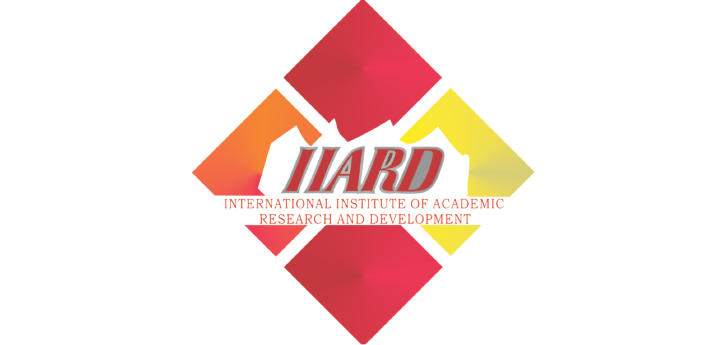Reimagining Deaf Childhood Education: Integrating Cultural Identity and Technological Innovations for Holistic Learning
Generoso Romano, Francesca Latino
Abstract
The education of deaf children poses unique challenges that intersect linguistic, cognitive, and sociocultural dimensions, necessitating pedagogical approaches that are both inclusive and responsive to diversity. This paper explores contemporary perspectives in deaf education by critically examining the interplay between communication modalities, cultural identity, technological innovations, and inclusive teaching strategies. Sign language, as a cornerstone of Deaf culture, is emphasized not only as a tool for communication but also as a means of fostering self-esteem, social belonging, and cognitive development. Bilingual-bicultural educational models are shown to support greater metalinguistic awareness and academic achievement when compared to monolingual oralist approaches. The integration of innovative technologies, such as real-time captioning, visual learning platforms, and emerging artificial intelligence applications, provides new pathways for engagement and access, although equity in implementation remains a pressing concern. The paper also highlights the importance of culturally competent pedagogy and inclusive classroom environments that honor deaf children's identities and communication preferences. Family involvement, teacher training, and institutional support are identified as critical factors in the success of inclusive practices. Ultimately, the study advocates for a paradigm shift in deaf educationβone that moves beyond deficit-oriented frameworks and centers on the empowerment of deaf learners as capable, creative, and culturally rich individuals. By embracing the full spectrum of Deaf experience, educators can create learning environments that not only accommodate but celebrate diversity, fostering both academic success and social inclusion.
Keywords
References
grammar and culture. Silver Spring, MD: T.J. Publishers.
Bat-Chava, Y. (2000). Diversity of deaf identities. American Annals of the Deaf, 145(5), 420β
https://doi.org/10.1353/aad.2012.0176
Easterbrooks, S. R., & Stephenson, B. (2006). "Integrating visual and auditory technologies in
language development for deaf children." Technology and Disability, 18(3), 113β122.
Fitzgerald, D., Hall, M. L., & Morere, D. A. (2020). Technology and literacy in deaf education.
In M. Marschark & H. Knoors (Eds.), The Oxford Handbook of Deaf Studies in
Learning and Cognition (pp. 205β220). Oxford University Press.
Geers, A. E., Tobey, E. A., Moog, J. S., & Brenner, C. (2011). "Long-term outcomes of cochlear
implantation in the preschool years: From elementary grades to high school."
International
Journal
of
Audiology,
50(S1),
S30βS34.
https://doi.org/10.3109/14992027.2010.540582
Hall, W. C., Hall, M. L., & Caselli, N. (2019). Deaf children need language, not (just) speech.
First Language, 39(4), 367β395. https://doi.org/10.1177/0142723719834102
Hall, W. C., Levin, L. L., & Anderson, M. L. (2017). Language deprivation syndrome: A
possible neurodevelopmental disorder with socio-cultural origins. Social Psychiatry
and Psychiatric Epidemiology, 52(6), 761β776. https://doi.org/10.1007/s00127-017-
1351-7
Humphries, T., Kushalnagar, P., Mathur, G., Napoli, D. J., Padden, C., Rathmann, C., & Smith,
S. R. (2012). Language acquisition for deaf children: Reducing the harms of zero
tolerance to the use of alternative approaches. Harm Reduction Journal, 9(1), 16.
https://doi.org/10.1186/1477-7517-9-16
Knoors, H., & Marschark, M. (2012). Language planning for the 21st century: Revisiting
bilingual language policy for deaf children. Journal of Deaf Studies and Deaf
Education, 17(3), 291β305. https://doi.org/10.1093/deafed/ens018
Kushalnagar, P., Mathur, G., Moreland, C. J., Napoli, D. J., Osterling, W., Padden, C., &
Rathmann, C. (2010). Infants and children with hearing loss need early language access.
The Journal of Clinical Ethics, 21(2), 143β154.
Ladd, P. (2003). Understanding Deaf Culture: In Search of Deafhood. Clevedon: Multilingual
Matters.
Lane, H. (1999). The Mask of Benevolence: Disabling the Deaf Community (2nd ed.). San
Diego, CA: DawnSignPress.
Lane, H. (2005). Ethnicity, ethics, and the Deaf-world. Journal of Deaf Studies and Deaf
Education, 10(3), 291β310. https://doi.org/10.1093/deafed/eni030
Marschark, M., & Spencer, P. E. (2010). The Oxford Handbook of Deaf Studies, Language, and
Education (Vol. 2). Oxford: Oxford University Press.
Marschark, M., Shaver, D. M., Nagle, K. M., & Newman, L. A. (2015). Predicting the academic
achievement of deaf and hard-of-hearing students from individual, household,
communication, and educational factors. Exceptional Children, 81(3), 350β369.
https://doi.org/10.1177/0014402914563700
Mayberry, R. I. (2002). Cognitive development in deaf children: The interface of language and
perception in neuropsychology. In S. J. Segalowitz & I. Rapin (Eds.), Handbook of
Neuropsychology (2nd ed., Vol. 8, pp. 71β107). Amsterdam: Elsevier.
Mayberry, R. I. (2007). When timing is everything: Age of first-language acquisition effects on
second-language
learning.
Applied
Psycholinguistics,
28(3),
537β549.
https://doi.org/10.1017/S0142716407070294
Mayer, C., & Trezek, B. J. (2018). Literacy outcomes in deaf students: Current trends,
challenges, and future directions. Perspectives on Deafness. Oxford University Press.
McKee, M., & Paasche-Orlow, M. (2012). "Health literacy and the disenfranchised: The
importance of collaboration between limited English proficiency and deaf
communities."
Journal
of
Health
Communication,
17(sup3),
7β12.
https://doi.org/10.1080/10810730.2012.712621
Napier, J., & Leeson, L. (2016). Sign Language in Action. Berlin: De Gruyter Mouton.
https://doi.org/10.1515/9781614518126
Napier, J., McKee, R., & Goswell, D. (2010). Sign language interpreting: Theory and practice
in Australia and New Zealand. The Federation Press.
Padden, C., & Humphries, T. (2005). Inside Deaf Culture. Cambridge, MA: Harvard University
Press.
Skelton, T., & Valentine, G. (2003). Political participation, political action and political
identities: Young D/deaf people's perspectives. Space and Polity, 7(2), 117β134.
https://doi.org/10.1080/1356257032000133926
Snoddon, K. (2008). American Sign Language and early literacy: Research and practice.
Canadian
Modern
Language
Review,
64(4),
581β604.
https://doi.org/10.3138/cmlr.64.4.581
Swanwick, R., & Marschark, M. (2010). Enhancing education for deaf children: Research into
practice and back again. Deafness & Education International, 12(4), 217β235.
https://doi.org/10.1179/1557069X10Y.0000000002
Young, A., & Tattersall, H. (2007). Universal newborn hearing screening and early
identification of deafness: Parents' responses to knowing early and their expectations
of child communication development. Journal of Deaf Studies and Deaf Education,
12(2), 209β220. https://doi.org/10.1093/deafed/enm005

